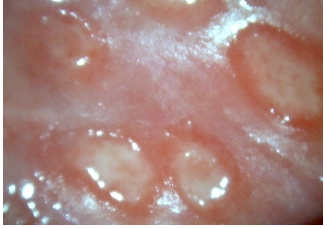Check out today’s Step 2 CK Qmax Question Challenge.
Know the answer? Post it in the comments below! Don’t forget to check back for an update with the correct answer and explanation (we’ll post it in the comments section below).
A 24-year-old G3P1 woman pregnant with twins at 34 weeks’ gestation presents to her obstetrician complaining of irregularly timed abdominal cramping and contractions. The discomfort is localized to her pelvis and has not gotten worse with time. The cervix is neither dilated nor effaced on cervical examination, and the amniotic sac is intact. During this visit a biophysical profile is performed and is normal except for a low amniotic fluid index, indicating oligohydramnios. The patient previously had an ultrasound during the second trimester and did not have oligohydramnios at that time.
Which of the following, if present, would be most likely to contribute to the development of oligohydramnios?
A. Fetal duodenal atresia
B. Maternal gestational diabetes
C. Maternal hypertension
D. Multiple gestation
E. Rh incompatibility
———————–
Want to know the ‘bottom line?’ Purchase a USMLE-Rx Subscription and get many more features, more questions, and passages from First Aid, including images, references, and other facts relevant to this question.
This practice question is an actual question from the USMLE-Rx Step 2 CK test bank. Get more Step 2 CK study help atUSMLE-Rx.com.





D- Carrying Twins: Women pregnant with twins or multiples are at a higher risk of low amniotic fluid levels. Twin-to-twin transfusion syndrome (a condition where one twin experiences severe amniotic fluid deficiency while the other has excessive amounts of fluid) can also cause oligohydramnios.
D multiple gestations can cause twin-to-twin transfusion syndrome. It’s an interesting and somewhat problematic happening during this type of pregnancy.
D
No Mention of Patients Vitals and previous child delivery H/O
Twins could be the most probable cause
The correct answer is C. Oligohydramnios arising in the third trimester can be related to multiple factors. The most common is rupture of the membranes resulting from labor. The patient described has sporadic irregular contractions that do not result in cervical effacement or dilation (Braxton Hicks contractions). In the absence of ruptured membranes, oligohydramnios is most often a result of uteroplacental insufficiency caused by either maternal hypertension, preeclampsia, or collagen vascular disease. Other causes of oligohydramnios include placental factors such as abruption or infarction, and fetal causes such as urinary tract abnormalities.
A is not correct. Duodenal atresia interferes with the swallowing of amniotic fluid by the fetus and decreases the removal of amniotic fluid from the amniotic sac. This will result in an increase in amniotic fluid and resultant polyhydramnios.
B is not correct. Maternal gestational diabetes mellitus leads to polyhydramnios. Postulated mechanisms include increased fetal urine output or decreased amniotic fluid swallowing, but the exact mechanism is unknown. Thus gestational diabetes causes an increase, rather than a decrease, in amniotic fluid levels.
D is not correct. Multiple gestational pregnancies can be associated with twin-to-twin syndrome (TTTS). TTTS is associated with both oligohydramnios and polyhydramnios occurring in monozygotic, monochorionic twins. It is more likely to occur during weeks 16-25. This patient had an ultrasound during the 2nd trimester of her pregnancy and there was no indication of oligohydramnios. In TTTS the donor twin develops low blood volume retarding growth and development, decreased urinary output leading to lower than normal levels of amniotic fluid and causing oligohydramnios. The opposite occurs in the recipient twin. Here, there is increased blood volume eventually leading to polyhydramnios.
E is not correct. Rh incompatibility may lead to isoimmunization, and in previously sensitized pregnancies can cause fetal anemia, leading to a high-output cardiac state. Urine production is often increased in such high-output states, leading to polyhydramnios, not oligohydramnios.
Thank you for explanation . Makes sense . Was good !
beckon
Camden
Avery